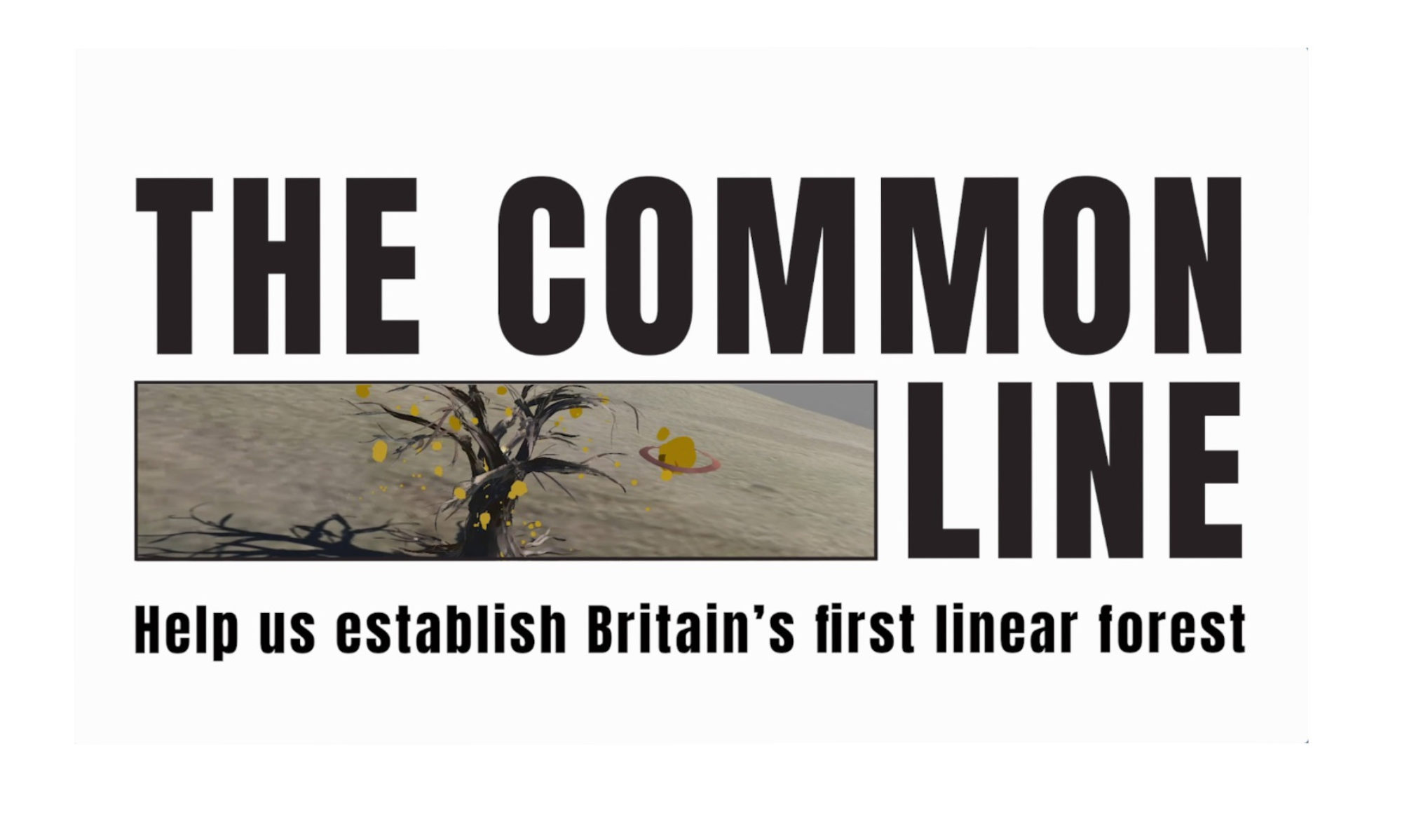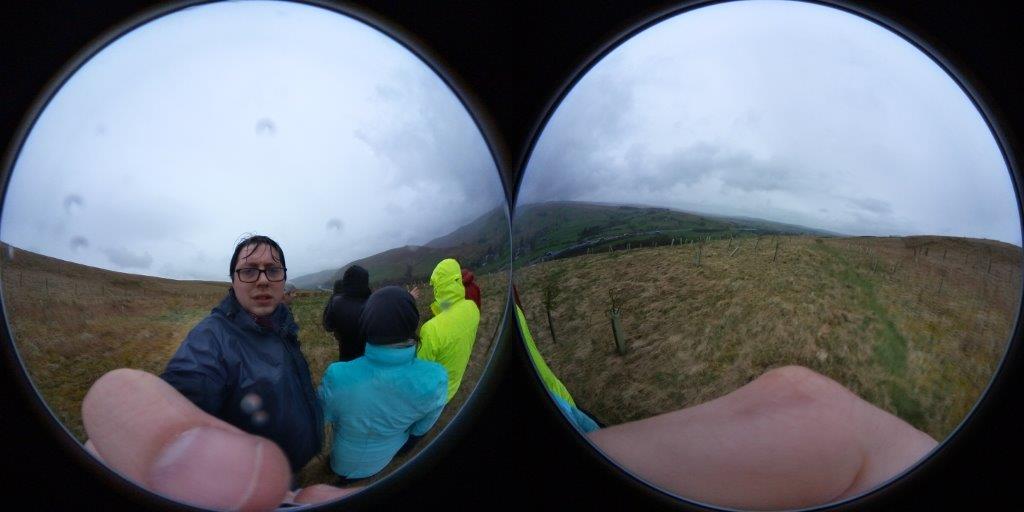As we drive back down the M6 from Carlisle we cross The Common Line again around Tebay. We are on our way to meet the tree planters. They are waiting for us next to their van, on the side of the road in the village – in the rain. We walk behind the houses and pick our way up the hillside, through the gates, around the sheep. There is a cold wind and still some snow on a far peak. The grass is brown and tough. It’s not as muddy as I expect it to be. After around 15 minutes we reach the planting site.
The tree planters have had to negotiate hard to establish a large area of Hawthorn – a small hedging tree that’s hardy enough to withstand the winters here on the fell. There is also some Blackthorn and small patches of Willow planted in the wetter gullies of the hill. It is the beginning of a process of afforestation on the hillside facing the motorway. They had to be persuasive about the benefits of enclosing what is privately owned land accorded common grazing rights. They are planting for the purposes of nurturing more ecologically diverse life in the area. The planting will change the aesthetic of the panorama experienced by drivers as they travel into and out of this iconic, Lake District landscape. Something which also had to be negotiated with various others holding differing opinions on what might constitute the ‘right’ kind of view from the motorway. There were also fears that the trees would block afternoon light from the houses lower down the valley.
The area has been so long without trees that it is like starting again. Perhaps, through particular terms of reference, this fell and others around it could be described as an area of ecological devastation[1]. The tree planters enclosed 100 hectares with fencing to keep out larger animals. 65,000 thousand trees were put in, and protected by plastic tree covers to stop smaller animals like rabbits and voles eating the young saplings. As we talk, the planters busy themselves straightening the tree covers, hammering stakes back in, gently lifting leaves and branches, tending to the small trees. It makes me think of the continual care involved in housework. Keeping our home in good order.
‘See here are owl droppings’. The short-eared owl perches on the growing trees, there is food for them here. Voles and other small mammals are burrowing into the heathland, breaking up the compacted grass and soil. The rate of loss of such a planting site is 40%. The deer jump the fences to nibble on the soft shoots. Rodents burrow underneath the tree guards and strip the lower parts of the plant of bark and leaves. Some of the loss is just down to planting the wrong type of tree, or the right tree in the wrong kind of place. It’s all a big experiment, one which requires commitment, passion and hard labour.
It takes 20 years for a Hawthorn to reach full height, but once established it opens the way for other species. The thorny plants form natural barriers inside which an Oak might seed itself more easily. The removal of grazing sheep allows the growth of long dormant seeds of grasses and flowers, bringing more butterflies, moths and bird life. We stand for a moment and listen to the rain on the grass. I imagine the voices of owls and the scraping of tiny paws through earth. The softening and re-opening of the land to more diverse bodies is here.
Paula Crutchlow, 10th May 2018
[1] We know through Sarah Whatmore’s work with residents in Pickering for instance, that flooding is not just a matter of the amount of rain that falls out of the sky, but are complex events mediated in part by how we have shaped our landscapes into monocultures. Afforestation of upland sites along with other landscape management strategies that increase bio-diversity, are ways of mitigating against such events.

